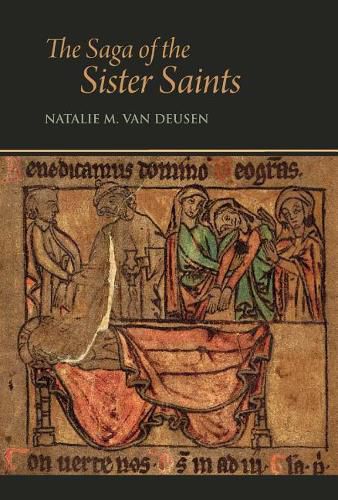Readings Newsletter
Become a Readings Member to make your shopping experience even easier.
Sign in or sign up for free!
You’re not far away from qualifying for FREE standard shipping within Australia
You’ve qualified for FREE standard shipping within Australia
The cart is loading…






This book examines the cults and legends of Martha and Mary Magdalen in medieval Scandinavia, especially Iceland. While a number of parallels may be drawn between Iceland and mainland Scandinavia in terms of liturgical and artistic representations of Martha and Mary Magdalen, the Old Norse-Icelandic literary tradition stands apart from its Scandinavian counterparts in the cultural significance and relevance it gives to each of the sister saints in medieval Iceland, where the composite Mortu saga ok Mariu Magdalenu was compiled in the mid-fourteenth century.
The historical study that opens the volume treats the manuscripts and Latin sources of the saga, lending insight into authorship and provenance; it also details representations of Martha and Mary Magdalen in liturgical materials, art, and literature from medieval Scandinavia, before turning to the saints’ cults and legends in medieval Iceland.
All the available evidence for the sister saints in Iceland from its Christianization in 1000 until around the time of the Reformation in 1550 is analyzed in detail, especially evidence from church inventories (maldagar) but also from literary works in prose and verse, as well as from charters and letters. Special attention is given to issues of style and content in the saga and, in particular, to views on women preachers in medieval Iceland. The book concludes with a normalized edition of the only complete redaction of Mortu saga ok Mariu Magdalenu, followed by its first English translation.
$9.00 standard shipping within Australia
FREE standard shipping within Australia for orders over $100.00
Express & International shipping calculated at checkout
This book examines the cults and legends of Martha and Mary Magdalen in medieval Scandinavia, especially Iceland. While a number of parallels may be drawn between Iceland and mainland Scandinavia in terms of liturgical and artistic representations of Martha and Mary Magdalen, the Old Norse-Icelandic literary tradition stands apart from its Scandinavian counterparts in the cultural significance and relevance it gives to each of the sister saints in medieval Iceland, where the composite Mortu saga ok Mariu Magdalenu was compiled in the mid-fourteenth century.
The historical study that opens the volume treats the manuscripts and Latin sources of the saga, lending insight into authorship and provenance; it also details representations of Martha and Mary Magdalen in liturgical materials, art, and literature from medieval Scandinavia, before turning to the saints’ cults and legends in medieval Iceland.
All the available evidence for the sister saints in Iceland from its Christianization in 1000 until around the time of the Reformation in 1550 is analyzed in detail, especially evidence from church inventories (maldagar) but also from literary works in prose and verse, as well as from charters and letters. Special attention is given to issues of style and content in the saga and, in particular, to views on women preachers in medieval Iceland. The book concludes with a normalized edition of the only complete redaction of Mortu saga ok Mariu Magdalenu, followed by its first English translation.